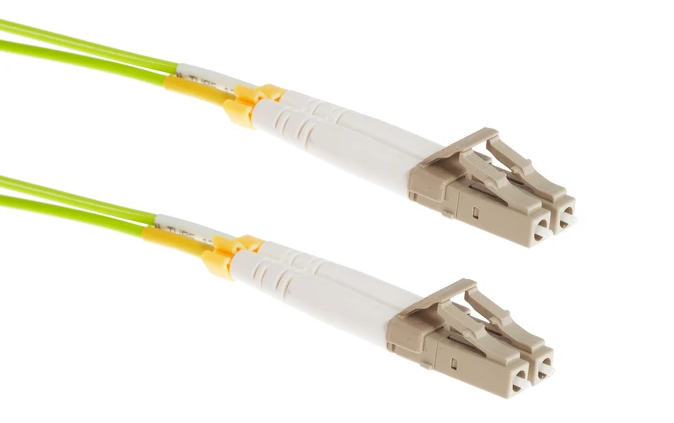Oufu Optical Fiber Cable Co.,Ltd
Address: Shenyang, Liaoning, China
Contact person: Manager Zhang
Phone: 400-964-1314
Mobile phone: +86 13904053308
【whatsapp && wechat】
2024-10-11 1858

Performance Enhancements: OM4 vs. OM3
Bandwidth and Reach:
One of the most significant differences between OM4 and OM3 lies in their bandwidth capabilities. OM3 fiber is designed to support 10 Gigabit Ethernet (GbE) over distances of up to 300 meters when using laser-optimized sources. However, OM4 fiber offers an even greater leap in performance, capable of supporting 40 GbE and 100 GbE over similar distances due to its higher effective modal bandwidth (EMB). This makes OM4 ideal for high-density, high-bandwidth applications where extended reach and increased data rates are critical.
Signal Integrity:
Signal integrity is another critical factor distinguishing OM4 from OM3. OM4 fiber exhibits lower modal dispersion, which means that signals travel more evenly and with less distortion. This results in improved signal quality and reduced bit error rates, even over longer distances. In contrast, OM3 fiber, while still high-performing, may experience slightly higher dispersion, particularly at higher frequencies.
Chromatic Dispersion:
Chromatic dispersion, the broadening of a signal as it travels through a fiber due to different wavelengths traveling at different speeds, is also mitigated more effectively in OM4 fiber. This is particularly important for applications requiring high-speed data transmission over long distances, as chromatic dispersion can degrade signal quality and reduce effective bandwidth.
Application Scenarios: Where OM4 and OM3 Shine
www.adsscable.cn
OM4 Multimode Fiber:
High-Density Data Centers: OM4's superior bandwidth and reach make it ideal for high-density data centers where space is constrained and the need for high-speed, reliable data transmission is paramount. It supports the latest Ethernet standards, enabling seamless integration of high-capacity servers, storage systems, and cloud-based applications.
Campus and Metropolitan Area Networks (MANs): In campus and MAN environments, OM4 fiber's extended reach and high bandwidth enable the creation of robust, scalable networks that can support growing data demands and future upgrades.
Intelligent Buildings: OM4 fiber's ability to support high-speed data transmission and its resistance to signal degradation make it an excellent choice for integrating advanced automation, security, and communication systems in intelligent buildings.
OM3 Multimode Fiber:
Enterprise Networks: OM3 fiber is well-suited for enterprise networks requiring high-speed data transmission over moderate distances. It supports 10 GbE and can be used to upgrade existing network infrastructure to support higher bandwidth applications without the need for extensive rewiring.
Industrial Applications: In industrial settings, OM3 fiber's durability and resistance to environmental factors make it a reliable choice for connecting sensors, controllers, and other devices in automation and monitoring systems.
Broadcast and Media Applications: OM3 fiber's ability to support high-definition video and audio signals makes it an ideal solution for broadcast and media environments, enabling the seamless transmission of high-quality content over long distances.
Conclusion
In conclusion, both OM4 and OM3 Multimode Fibers offer significant advantages in high-speed data transmission, but their performance enhancements and suitability for specific application scenarios differ. OM4 fiber, with its higher bandwidth, extended reach, and improved signal integrity, is ideal for high-density data centers, campus and MAN environments, and intelligent buildings requiring cutting-edge performance. Conversely, OM3 fiber, with its robust design and support for 10 GbE, is well-suited for enterprise networks, industrial applications, and broadcast and media environments.
When choosing between OM4 and OM3, it's essential to consider your specific network requirements, including bandwidth demands, distance limitations, and future scalability plans. By understanding the unique benefits of each fiber type, you can make an informed decision that aligns with your network's needs and future growth objectives.www.adsscable.cn